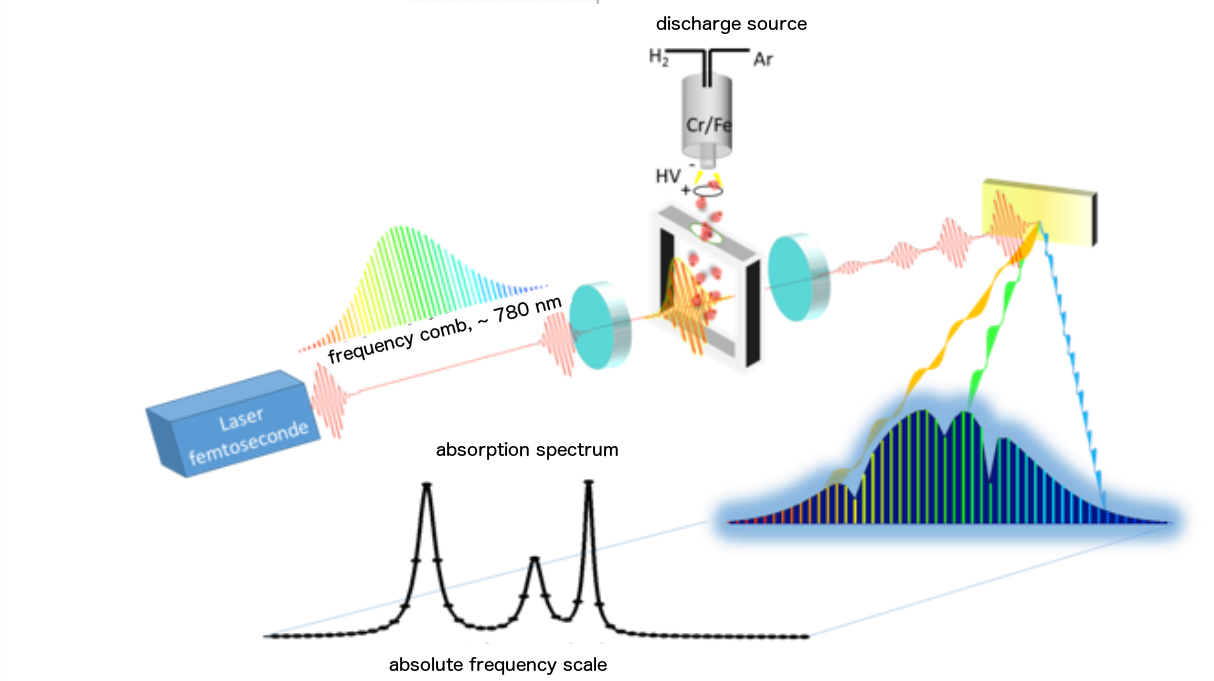MOLECULAR SPECTROSCOPY GROUP
We are interested in the detailed structure of electronic transitions of small molecules, studied in the gas phase, with particular focus on transition metal hydrides seen in the atmospheres of cool stars.

Example : Fourier transform spectrum of NiH, taken at 0.7 Tesla, showing partially resolved Zeeman structure.
We use a variety of optical techniques to record high-resolution spectra, developing laboratory-scaled instrumentation to produce molecules and radicals of interest with visible and near-IR laser sources. Our preferred methods include laser induced fluorescence, and absorption and emission techniques, often used in conjunction with Fourier transform spectrometry. We turn increasingly to cavity-enhanced techniques to increase sensitivity.
A Ti:sapphire-based frequency comb with 'Vernier" filtering coupled to a high-finesse optical cavity (depicted above) has been designed to allow broad-band high sensitivity absorption measurements around 780 nm, taking measurements in minutes rather than hours; this instrument is well adapted to record spectra of short-lived species such as discharge products.
 |
|
| Cavity Enhanced, High-Sensitiviy Frequency-comb Spectroscopy |
Our research activities naturally give rise to numerous collaborations, both within France and International (see recent publications).
.

















